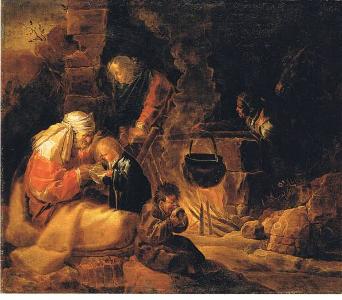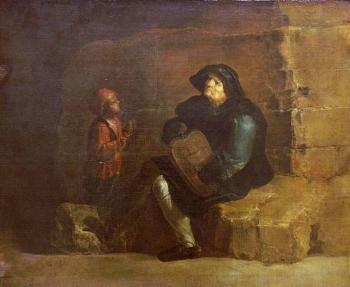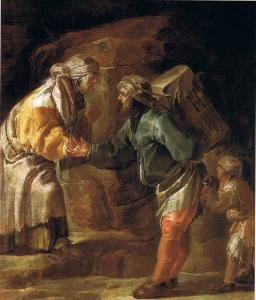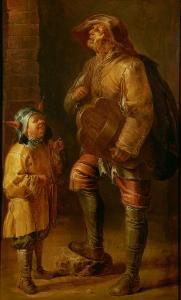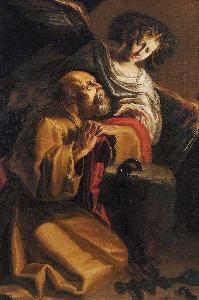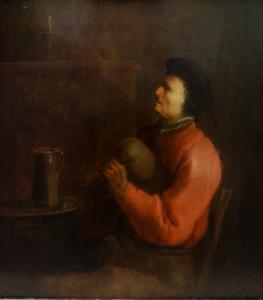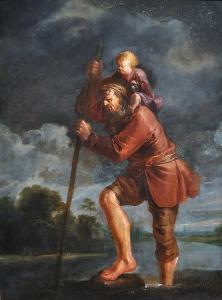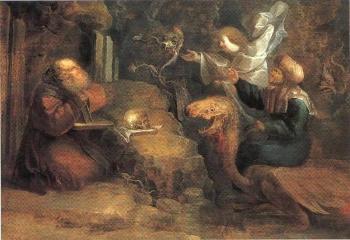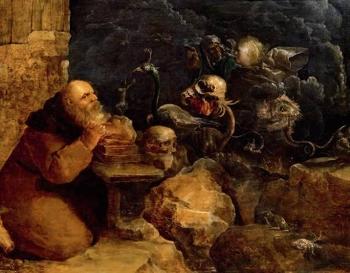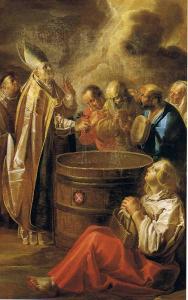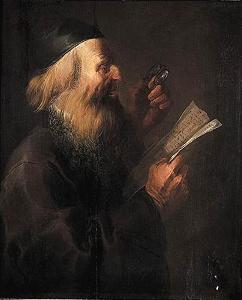Jan van de Venne
The angel freeing Saint Peter
Oil on canvas : 143 X 97 cm
Unsigned
Sold at Scheublein Munich, 19/06/09
For 27.500 €
This is a comparative item
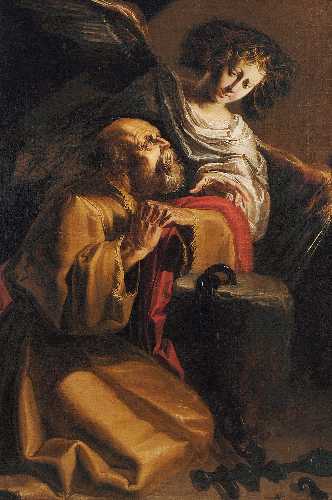
Painting for Sale
In short
At the time when Europe is being flooded by refugees it is confronting to see this moving scene dating from the first half of the seventeenth century: nothing new under the sun.
Jan van de Venne specialised in so-called low-life scenes, representing poor people, often gypsies. His use of ochre, monochrome tonalities must have been inspired by Dutch paintings.
About Jan van de Venne
Flemish painter
Mechelen (?) circa 1592 – before 1651 Brussels (?)
Ancient sources sometimes spell his name as van der Vinnen.
Also known as the Pseudo-Van de Venne, because he used to be wrongly thought of as the brother of the better known Dutch painter Adriaen van de Venne. Jacques Foucart from the Louvre rectified this error in an article published in 1978.
Very few of his paintings are signed, but based on the signed or documented works it was very easy to attribute the unsigned ones, seeing the very specific style, subjects, use of light and brilliancy of Jan van de Venne.
Painter of genre scenes and also of religious subjects.
Van de Venne’s nervous style might have been influenced by David Teniers I; some authors even mention our painter must have studied under him.
In 1616 he is recorded as a Master in the Painter’s Guild of Saint Luc in Brussels.
Van de Venne had important patrons, amongst them the Cardinal Infant Ferdinand and Archduke Leopold Wilhelm.
Van de Venne specialised in caricatured, so-called ‘low-life’ subjects, such as card-players, tooth-pullers and musicians, and in expressive religious scenes. His love for brownish tonalities and the choice of his themes are related to contemporary (Dutch) painters such as Adriaen Brouwer and Adriaen van Ostade, Benjamin Cuyp and Andries Both.
About our painting
Our painting shows the indirect influence of Rembrandt through Benjamin Gerritsz. Cuyp (Dordrecht 1612 – 1652 Dordrecht) in the chiaroscuro handling (clair – obscur) and sketchy technique with broad brushstrokes and ochre-brown tonalities.
As Jan van de Venne regularly painted gipsies he is also known as “the Master of the Gypsies” (“le Maître des Tziganes”) in France, where many museums hold his paintings: in Aix-en Provence, Auxerre, Besançon, Chambéry, Dijon, Dunkirk, Hazebrouck, Lille, Marseille, Paris-Louvre, Quimper and Semur-en-Auxois. Our fugitives might indeed represent gypsies.
About 17th century gypsies
The Romani or Gypsies are a nomadic people who left NW India roughly 1500 years ago and arrived in Western Europe from the East in the 15th century. Although they were at first welcome in most countries and towns, this attitude changed rapidly and dramatically. Just as the Jews they were being stigmatised and criminalised. This was the start of a long history of accusations of bringing the plague, of spying for the Turks, of stealing and cheating. This resulted in discrimination, forced labour, persecution, abduction of their children, ethnic cleansing, deportation, expulsion and killing.
During the 17th and 18th century the Romani were called “Egyptians” or “pagans”. The designation Egyptian (hence “gypsy” refers to the story that they had fled from Egypt after the Muslim conquest of the country during the 7th century AD.
Romani were active as musicians, fortune-tellers, dealers in herbs and medication, seasonal workers in farms, etc. Some survived as beggars. They literally lived at the edge of society, in tents and huts, in regions where the vegetation and the conditions of the ground made it difficult for a central control.
Why should you buy this painting?
Because van de Venne is such an empathic painter: the sympathy with which he has painted these poor people is stunning, almost modern. The vitality that radiates from the small child stands in strong contrast with the exhausted bodies and tired looks of the three elder people.
Because our painter has created with just a few lines and little ochre paint the entrance of a cave: respect.
Comparative paintings
Click photos for more details

